Acoustic sensors enable efficient and non-invasive monitoring of a wide range of species, including many that are difficult to monitor in other ways. Although they were initially limited in application scope largely due to cost and hardware constraints, the development of low-cost, open-source models like the Audiomoth in recent years has increased access immensely and opened up new avenues of research. For example, some teams are using them to identify illicit human activities through the detection of associated sounds, like gunshots, vehicles, or chainsaws (e.g. OpenEars).
With this relatively novel dimension of wildlife monitoring rapidly advancing in both marine and terrestrial systems, it is crucial that we identify and share information about the utility and constraints of these sensors to inform efforts. A recent study identified advancements in hardware and machine learning applications, as well as early development of acoustic biodiversity indicators, as factors facilitating progress in the field. In terms of limitations, the authors highlight insufficient reference sound libraries, a lack of open-source audio processing tools, and a need for standardization of survey and analysis protocols. They also stress the importance of collaboration in moving forward, which is precisely what this group will aim to facilitate.
If you're new to acoustic monitoring and want to get up to speed on the basics, check out these beginner's resources and conversations from across the WILDLABS platform:
Three Resources for Beginners:
- Listening to Nature: The Emerging Field of Bioacoustics, Adam Welz
- Ecoacoustics and Biodiversity Monitoring, RSEC Journal
- Monitoring Ecosystems through Sound: The Present and Future of Passive Acoustics, Ella Browning and Rory Gibb
Three Forum Threads for Beginners:
- AudioMoth user guide | Tessa Rhinehart
- Audiomoth and Natterjack Monitoring (UK) | Stuart Newson
- Help with analysing bat recordings from Audiomoth | Carlos Abrahams
Three Tutorials for Beginners:
- "How do I perform automated recordings of bird assemblages?" | Carlos Abrahams, Tech Tutors
- "How do I scale up acoustic surveys with Audiomoths and automated processing?" | Tessa Rhinehart, Tech Tutors
- Acoustic Monitoring | David Watson, Ruby Lee, Andy Hill, and Dimitri Ponirakis, Virtual Meetups
Want to know more about acoustic monitoring and learn from experts in the WILDLABS community? Jump into the discussion in our Acoustic Monitoring group!
Header image: Carly Batist
No showcases have been added to this group yet.
- @CDean
- | she/her
Grad Student, UW-Stout, Beaver habitat biodiversity research, process based restoration
- 0 Resources
- 7 Discussions
- 6 Groups
- @capreolus
- | he/him
Capreolus e.U.
wildlife biologist with capreolus.at





- 1 Resources
- 78 Discussions
- 16 Groups
- @fshort
- | He / Him
Boston University PhD Candidate, Biological Anthropology. Engaging in passive acoustic monitoring (PAM) of Bornean orangutans (Pongo pygmaeus wurmbii), Bornean white-bearded gibbons (Hylobates albibarbis), and red leaf monkeys (Presbytis rubicunda)
- 0 Resources
- 2 Discussions
- 2 Groups
- @SimoneW-TRU-DOE
- | She/her/hers
Research Officer with the Cayman Islands Department of Environment, Terrestrial Resources Unit. Her studies include tropical ecology, migratory birds, shorebird lifecycles, bats, reptiles, invasive species, biosecurity, wildlife health & marine biology.

- 0 Resources
- 1 Discussions
- 6 Groups
- @Mauricio_Akmentins
- | he/him
National Scientific and Technical Research Council of Argentina (CONICET)
Researcher and conservationist, focused on the conservation of the endemic and threatened amphibian species of Andean ecoregions of NW Argentina.

- 1 Resources
- 3 Discussions
- 6 Groups
Xeno-canto
Co-founder and admin of Xeno-canto.
- 0 Resources
- 2 Discussions
- 2 Groups
- @yvetteehlers
- | she
I am the regional ecologist for South-Eastern KwaZulu-Natal at Ezemvelo KZN Wildllife and a honorary research fellow at the Centre for Functional Biodiversity at the School of Life Sciences, University of KwaZulu-Natal.
- 0 Resources
- 5 Discussions
- 2 Groups
- @mlamb2
- | she/her
PhD Student working on a computer vision model to detect colonial waterbirds along the Texas coast in aerial imagery
- 0 Resources
- 3 Discussions
- 3 Groups
I'm a young conservationist from Ghana with over 7 years experience in Pangolin Conservation. My focus in Conservation is the human dimension of conservation. I am currently the manager for the Onepone Endangered Species Refuge.
- 0 Resources
- 0 Discussions
- 8 Groups
The World Can Be Better
- 0 Resources
- 0 Discussions
- 9 Groups
- @Lucille
- | She/Her
La Trobe University
Marine bioacoustician and elasmobranch scientist
- 1 Resources
- 9 Discussions
- 8 Groups
Ol Pejeta Conservancy
Endeavoring to implement tech solutions for conservation.



- 0 Resources
- 18 Discussions
- 11 Groups
Read about the advice provided by AI specialists in AI Conservation Office Hours 2025 earlier this year and reflect on how this helped projects so far.
6 August 2025
If you're a Post-Doctoral Fellow, a PhD student, or a member of the research staff interested in applying your computational skills to support active research publications, please read on to learn about the Cross-...
5 August 2025
A group of Montreal labs is searching for a postdoctoral researcher for a project applying machine learning to the spatial scaling of biodiversity.
28 July 2025
The Marine Innovation Lab for Leading-edge Oceanography develops hardware and software to expand the ocean observing network and for the sustainable management of natural resources. For Fall 2026, we are actively...
24 July 2025
Still unfunded, we are looking for a lab office, materials, used instruments and to create our educational basement.
17 July 2025
Join us in curating an annotated acoustic dataset for India! We are accepting strong and weak labels, read the FAQ document (linked below) for more info and sign the Data Agreement form to join
17 July 2025
Conservation technologies have a critical role in supporting biodiversity surveys at scale. Acoustic sensors have been increasingly adopted in ecological research, enabling us to expand our capacities in assessing...
15 June 2025
HawkEars is a deep learning model designed specifically to recognize the calls of 328 Canadian bird species and 13 amphibians.
13 May 2025
The Biological Recording Company's ecoTECH YouTube playlist has a focus on webinars about Bioacoustic monitoring.
29 April 2025
This paper includes, in its supplementary materials, a helpful table comparing several acoustic recorders used in terrestrial environments, along with associated audio and metadata information.
15 April 2025
Conservation International is proud to announce the launch of the Nature Tech for Biodiversity Sector Map, developed in partnership with the Nature Tech Collective!
1 April 2025
PhD position available at the University of Konstanz in the Active Sensing Collective Group!
28 March 2025
August 2025
event
September 2025
event
October 2025
November 2025
event
July 2024
event
May 2024
64 Products
Recently updated products
| Description | Activity | Replies | Groups | Updated |
|---|---|---|---|---|
| Thanks, we know they are breeding these animals here, I asked, since it's seems to be an expensive hobby, we need to allocate more funding for rural women in entrepreneurship and... |
|
Acoustics, Animal Movement, Citizen Science, Human-Wildlife Coexistence, Protected Area Management Tools, Wildlife Crime | 10 months ago | |
| WildMon, Terra Genesis, The VF Foundation, Thaksin University, and the Wanakaset Symbiosis Network have teamed up on a new project in... |
|
Acoustics, AI for Conservation, Community Base | 10 months 1 week ago | |
| This looks awesome! |
|
Acoustics | 10 months 1 week ago | |
| I would love to see my bat detector designs in use in Africa - drop me a line, let's see if we can get something to happen - I'm pipistrelledetector at gmail dot comhttp://www.... |
|
Citizen Science, Acoustics, Conservation Tech Training and Education, Human-Wildlife Coexistence | 10 months 2 weeks ago | |
| Hi Phil, Thanks for sharing - this is really interesting work! Seems like a cool integration of ground-based (or ocean-based) data and satellite data, with a community... |
|
Geospatial, Acoustics, Camera Traps, eDNA & Genomics | 10 months 3 weeks ago | |
| Or you could use my sbts-aru project. Which is free software that runs on Raspberry Pis. It also allows you to perform sound localization remotely if required, without bringing... |
|
Acoustics | 10 months 3 weeks ago | |
| Yes, predation is a significant conservation issue, especially for vulnerable species. Invasive predators can harm native wildlife, and carnivores preying on livestock often lead... |
|
Acoustics | 10 months 3 weeks ago | |
| I shared some information on different ARU options in this post which might help! |
|
Acoustics | 11 months ago | |
| Thanks for the plug, @Rob_Appleby Yes, we do a lot of work with audio playback as a nonlethal deterrent. We generally don’t do any work on identifying the animal... |
|
Acoustics | 11 months 1 week ago | |
| Hi Sean! I was the one who annotated these recordings and this is definitely a mistake- that song is a Hauxwell's Thrush; it's annotated correctly with 15622 but not with... |
|
Acoustics | 11 months 2 weeks ago | |
| @calyptura Try using another version of the download scripts that you can download from this link. There are 2 version of the script available. |
|
Acoustics | 11 months 2 weeks ago | |
| We actually recently introduced Recording Schedules - where you can control the PUC's duty cycle during (Day, Night, Dawn, Dusk). |
|
Acoustics | 11 months 2 weeks ago |
Webinar: Advances in Fisheries Electronic Monitoring
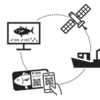 SAFET
SAFET
21 September 2020 12:00am
Amphibians and Acoustic Enrichment in Wildlife Passages
14 September 2020 11:18pm
Hackaday - Identifying Creatures That Go Chirp In The Night
11 September 2020 11:13am
Meet the Scientists of Black Mammalogists Week!
10 September 2020 12:00am
Tech Tutors: Review Session
3 September 2020 12:00am
African Bioacoustics Community Conference
 African Bioacoustics Community Conference
African Bioacoustics Community Conference
28 August 2020 12:00am
Sustainable Fishing Challenges: Fishing Gear Innovations
19 August 2020 12:00am
Challenge: ElephantEdge
11 August 2020 12:00am
AudioMoth Water Resistant Case Design
26 July 2018 8:16am
23 August 2019 8:21am
Hi - I'm down to three sheets - the usable area is 12cm by 12 cm - I did post some cloth to the US and the total price was under $5USD which I think would be 80-100 Peso but equally happy to send to your friend. Email me batnovice@gmail.com and we can sort out fine details - one thing is I'm away from home till early september. so couldn't send till then and the UK-Mexico post take about 5 days. Best Wishes - David Brown
10 August 2020 10:23pm
Hello to you all, I hope everyone is doing ok during this Covid-19 contingency.
Jsut sharing this adaptation for the water proof case for the Audio Moth.
https://www.tetrixecology.com/single-post/Developing-an-Enclosure-for-the-AudioMoth-Acoustic-Logger---Part-1
How do I build bespoke conservation technology?
20 July 2020 12:00am
Help with analysing bat recordings from Audiomoth
24 June 2020 12:47pm
9 July 2020 4:39pm
Johnnie, Hope you got on OK. If you need some data analysing I could help out if needed? Let me know on here - or email me a WeTransfer with some wav files?
Thanks, Carlos
14 July 2020 5:20pm
Hi Carlos
Thank you for your message. I would quite like to send you some files. What's the best email address to send them to?
Thanks
Johnnie
15 July 2020 11:08am
Johnnie,
Great. You can get me at work on c.abrahams@bakerconsultants.co.uk
Ta, Carlos
Tech Tutors: How do I scale up acoustic surveys with Audiomoths and automated processing?
8 July 2020 10:33pm
9 July 2020 6:11pm
Hi everyone,
Thanks for attending today's episode! You can find all of the collaborative notes at the link below, and we also encourage you to use this thread to connect and collaborate with the people you met in the chat.
https://notes.datawrapper.de/p/Tech_Tutors_Episode_4
We'll be posting the video and slides here tomorrow.
And as always, please use this thread to ask any follow-up questions you have for Tessa and the acoustic monitoring community!
-Ellie
Tech Tutors: How do I perform automated recordings of bird assemblages?
1 July 2020 10:44pm
8 July 2020 10:28pm
Hi everyone,
If anyone is looking for the episode's collaborative notes, you can find them here:
https://notes.datawrapper.de/p/Tech_Tutors_Episode_3
This doc features all the questions asked in this episode, as well as additional resources, participant introductions, and other helpful links.
-Ellie
Competition: Cornell Birdcall Identification
8 July 2020 12:00am
How do I scale up acoustic surveys with Audiomoths?
25 June 2020 12:00am
How do I perform automated recordings of bird assemblages?
 Carlos Abrahams
Carlos Abrahams
19 June 2020 12:00am
Seeking feedback: draft principles for responsible use of conservation surveillance technology
9 June 2020 6:29pm
How do I train my first machine learning model?
 Daniel Situnayake
Daniel Situnayake
9 June 2020 12:00am
How are you using your Audiomoth?
14 September 2018 10:31am
25 September 2018 8:08pm
I'm in North Somerset UK and have two AudioMoths. I've adapted some waterproof cases which also can be locked and strapped onto a tree etc using a python cable. This allow me to use them safely in semi-public spaces. My interst is surveying for bats and recording them with the land owners. I got interested in having a recorder, when helping to trap for nathusius' pipistrelle on a site I've know for 10 years - and just because I was out later than I normally survey we found not only nathusius' pipistrelle but a passing Lesser Horseshoe on my Petterson M500usb - so I decided to get some AudioMoths and play!
My Website is here
26 November 2018 10:40am
As well as the points highlighted by Steph, Open Acoustic Devices are also running an online survey to capture the use of AudioMoth. To evaluate the global impact of open-source conservation technology, it is important to know how the technology is being used. This survey will go towards a human-computer interaction study into the usability of tech in conservation, and also used to evaluate the global impact of open-source conservation technology. AudioMoth is being used as a case study to identify best practises for open-source conservation technology development and accessibility.
It would be great to keep sharing your experiences on this thread and if you have time here with our online survey.
22 May 2020 7:32am
How do we get notified for the next group buy?
standards
21 May 2020 9:39pm
WILDLABS Tech Tutors: Season One
19 May 2020 12:00am
Audiograms- the range species can hear at
11 March 2020 11:50am
19 April 2020 8:07pm
I'm a primatologist so can't say too much about other mammal taxa, but I believe this is the most comprehensive resource for primate audiograms--
Coleman, M. N. (2009). What do primates hear? A meta-analysis of all known nonhuman primate behavioral audiograms. International Journal of Primatology, 30(1), 55-91.
7 May 2020 9:47am
Hi Isla,
Range at which animals hear sounds depend on 4 things:
1) the frequency (pitch) of the sound of interest. As a rule of thumb, lower frequency sounds travel farther since high frequency sounds are subject to more absorption transmission losses.
2) the medium in which the sound is being transmitted in (i.e. sound travels at ~1500m/s in seawater and ~340m/s in air).
3) the audiogram of the animal (i.e. what frequencies CAN they hear), which Carly is referring to in the previous comment.
There has been a lot of audiogram research on marine mammals. Find an overview and links to a handful of publications here: https://dosits.org/animals/effects-of-sound/measure-marine-mammals-reaction-to-sound/hearing-sensitivity-studies/ . This has also recently been explored in diving seabirds from SDU (university of southern denmark).
and
4) the noise levels in the environment, as sounds can only be distinguished if they have some decent signal-to-noise ratio.
If you have any specific more questions, get in touch.
Cheers,
Chloe
Any here used Cornell's Swift Recorder?
13 April 2020 4:33am
28 April 2020 4:51pm
Hi Daniella,
Yes, I have used SWIFT, SongMeter SM4, and Audiomoths. I find Swift to be the most energy efficient. They are also very affordable. Currently, they are my number one choice. In reality, however, I would say that whether you use Swift over other sensors, particularly Audiomoths, would depend on the type of study you want to do and how often you can get to the sensors to replace batteries. Happy to talk about cons and pros if you want. Just send me an email here: david.fernandez@uwe.ac.uk.
Cheers,
David
6 May 2020 8:13am
Hello Daniella,
We, WCS Mongolia, used lithium batteries for SWIFT recorders, the most of them still working in until now, since the last August.
At the Cornell SAW, they said alkanium battery will be working 27-44 days, and it depends on configuration sample rate.
We are configured 8K for sampling rate, and 24 hours recording.
Thanks,
Ochiroo
6 May 2020 8:22am
We used the following lithium batteries.
URL:
https://fortebattery.en.made-in-china.com/product/FBDEubqyfGhH/China-C-Size-Lithium-Batteries-Cr26500-Cr26500se-Er26500-Er26500m.html
Virtual Meetup Discussion: Acoustic Monitoring
10 March 2020 2:31pm
28 March 2020 8:24am
Hi all,
I missed this, but just watched the virtual meeting recording. Towards the end Stephanie mentioned there were many questions about recording multiple channels for localisation. I hadn't thought there was that much interest in it. Anyway my collaborator/client and I have been working on this off and on and slowly, but she did present some results she got at the recent conference in NZ. If there is any interest I'll see if I can get her to give out her slides or something.
On another tack I'm interested in the experience of anyone who has done gunshot/blast fishing localisation. In particular I'm curious about the algo used for detection and also for localisation. I'm taking the matched filter approach for detection but am now wondering if maybe CNN classification might be better.
Finally I'm interested if anyone has ideas about implementing a LoRa mesh, or knows of a useable mesh layer.
Thanks,
-harold
19 April 2020 8:09pm
Where would I be able to find the recording of this virtual meetup? Thanks!
20 April 2020 9:45am
Hi Carly,
The recording + our notes is here:
WILDLABS Virtual Meetup - Acoustic Monitoring
We also keep an archive of all past meetups here:
https://www.wildlabs.net/virtual-meetups
Steph
WILDLABS Community Call Recording: Rainforest X-PRIZE
30 March 2020 12:00am
Acoustic monitiring virtual meetup recording
27 March 2020 10:14am
Prior work on Bird Flock identification
22 March 2020 9:44am
23 March 2020 9:01pm
Hi Andrew,
Dan here—I'm one of the authors of the TinyML book! I love your Withymbe project; I've previously done work involving embedded systems and insects, and it's interesting to hear about your plans for bird flocks.
As long as you have sufficient data, you should be able to identify different bird sounds and discern them from background noise. The TinyML book has a chapter that introduces the underlying techniques, and I'd also recommend taking a look at www.edgeimpulse.com - we've built a set of tools designed to make it easy to train these types of models.
We actually recently published a tutorial on Wildlabs about this very concept:
https://www.wildlabs.net/resources/case-studies/tutorial-train-tinyml-model-can-recognize-sounds-using-only-23-kb-ram
I'm always excited to learn about new applications; feel free to reach out if there's any way we can help. I'm dan@edgeimpulse.com.
Warmly,
Dan
24 March 2020 3:49am
Just guessing but I don't think it will make much of a difference, individual or flock. The spectrogramme will look much the same, and I think that is used as the input vector to the CNN. If so then I would expect the model will be quite tolerant of flock size. Just spitballing here though.
24 March 2020 7:23am
Hi Harold!
Great to know you are in the domain. To be honest my analysis so far indicates that when conducting a DSP approach on the spectrum, smoothing via convolution becomes an issue? Basically, the raw spectrum is too jagged to match, so one convolves it to smooth it, but then one just gets a generic "noise"-shaped spectrum. I also have variances in sampled spectra from the same source recording? I am using an fs=44100 and a spectrum 0 - 64kHz initially, or though I tried to filter from 100 - 9k with little success?
My design outline is: I need to identify the presence of a flock of a certain species of avians, I need to know when the flock is not present, and I need to distinguish the presence of other flocks of birds, not to identify them, but they are sometimes similar in size and possibly, therefore, call range? A sort of "We - Not We" approach?
I am comparing the gestalt sound, not individual calls?
Plus: I am using a Rapsberry Pi for the Fog Node currently, but see that I can use my Arduino Uno for TinyML from the examples which use a Nano? I am interested in the power-saving, but need a robust microphone rig, which I currently get via usb?
I will checkout your tutorial, many thanks!
Tally ho!
Andrew.
Virtual Field Trip: Conservation Technology with Shah Selbe
24 March 2020 12:00am
Enter the Zooniverse: Try Citizen Science for Yourself!
18 March 2020 12:00am
Tutorial: Train a TinyML Model That Can Recognize Sounds Using Only 23 kB of RAM
16 March 2020 12:00am

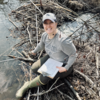





















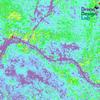

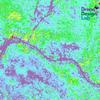




















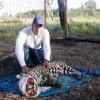
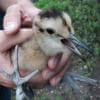


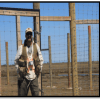

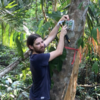


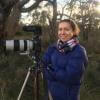


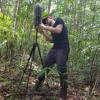


22 August 2019 6:50pm
Hi, do you still have some left overs of hyrdrophobic cloth? I'm currently in Mexico but a friend of mine is in UK so she can bring them to me. Thank you so much.